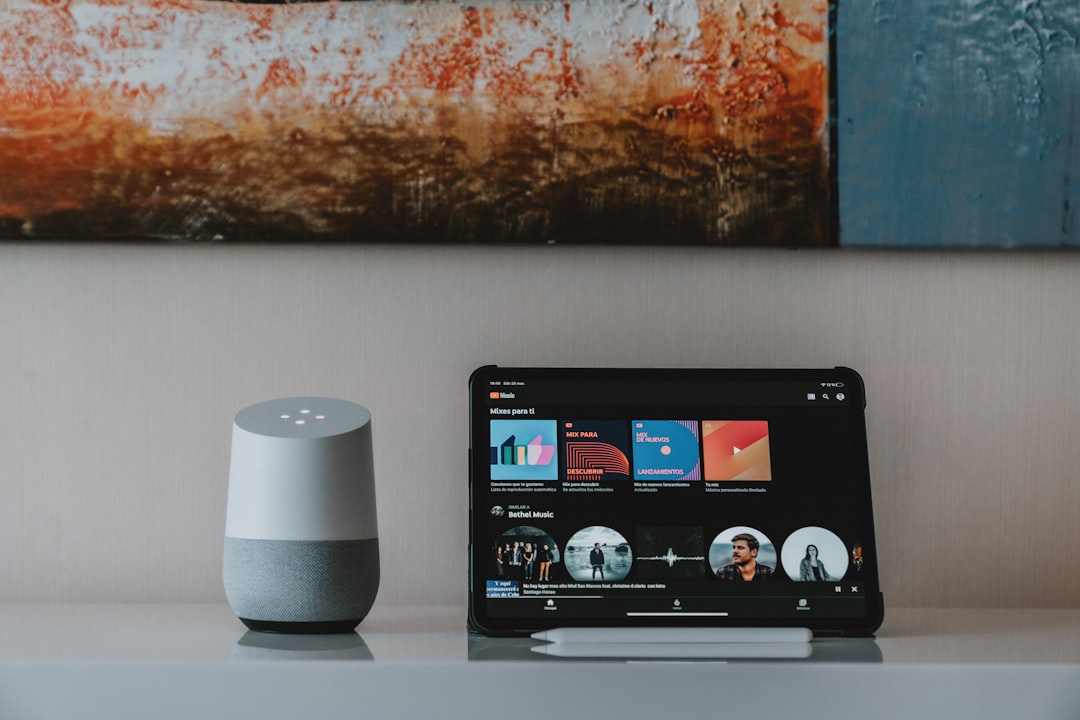Smart Home Woes: Google vs. Alexa for Busy Parents
Uncover the pitfalls of Google’s smart home ecosystem for busy parents. Learn which assistant truly supports your hectic lifestyle. Explore
Introduction
Overview of Google’s Smart Home Ecosystem
Google’s smart home ecosystem, once a promising frontier in the realm of connected living, aimed to seamlessly integrate technology into everyday life. With products like Google Home, Nest devices, and the Google Assistant, the ecosystem promised to provide users with convenience, efficiency, and enhanced control over their home environments.
These devices were designed to work in harmony, offering features such as voice-activated controls, smart scheduling, and energy management.
The vision was to create a cohesive network where devices communicate effortlessly, simplifying tasks and enhancing user experience.
Challenges Facing the Ecosystem
Despite its ambitious goals, Google’s smart home ecosystem has faced significant challenges that threaten its stability and growth. One of the primary issues is the lack of interoperability between devices from different manufacturers.
This fragmentation creates a frustrating user experience, as consumers struggle to integrate new devices into their existing setups.
Moreover, frequent changes in product lines and software updates have led to compatibility issues, leaving users with obsolete or dysfunctional devices. This inconsistency undermines consumer trust and discourages long-term investment in the ecosystem.
Market Competition and Consumer Expectations
The competitive landscape for smart home technology has intensified, with companies like Amazon and Apple offering robust alternatives.
These competitors have capitalized on Google’s missteps, providing more reliable and user-friendly solutions that appeal to tech-savvy consumers.
As consumer expectations continue to evolve, there is an increasing demand for seamless integration, enhanced security, and intuitive interfaces. Google’s ecosystem has struggled to meet these expectations, further eroding its market position.
Implications for the Future
The current state of Google’s smart home ecosystem raises questions about its future viability.
To regain consumer confidence and market share, Google must address the core issues of interoperability and reliability. This may involve strategic partnerships, improved software support, and a renewed focus on user-centric design.
Ultimately, the success of Google’s smart home ecosystem will depend on its ability to adapt to the rapidly changing landscape of technology and consumer needs.
Without significant improvements, the ecosystem risks becoming obsolete in a market that values innovation and seamless connectivity.
Issues with Google’s Smart Home
Integration Challenges
One of the primary issues facing Google’s smart home ecosystem is the challenge of integrating various devices seamlessly. While Google Assistant aims to be the central hub for smart home management, users often experience difficulties when trying to connect third-party devices.
Compatibility issues arise, leading to frustration as users struggle to create a cohesive smart home environment.
Moreover, the lack of a unified protocol means that some devices may not work as intended or require additional steps for integration. This fragmentation undermines the convenience that smart homes are supposed to offer, leaving users dissatisfied with their experience.
Privacy Concerns
Privacy is a significant concern for users of Google’s smart home products.
As these devices collect vast amounts of data to function effectively, users are increasingly worried about how their data is stored and used. Reports of data breaches and unauthorized access have heightened these concerns, causing some users to reconsider their reliance on smart home technology.
Google has made efforts to address these issues by implementing stricter privacy policies and offering more transparency.
However, the perception of vulnerability persists, which can deter potential users from fully embracing Google’s smart home solutions.
Inconsistent Performance
Another issue plaguing Google’s smart home ecosystem is inconsistent performance across its devices. Users report frequent connectivity problems, with devices sometimes failing to respond to commands or losing connection to the network.
These reliability issues can be particularly frustrating when they interrupt daily routines or compromise home security.
Software updates intended to improve performance can sometimes exacerbate these issues, introducing new bugs or compatibility problems. This inconsistency undermines user trust and can lead to a diminished perception of Google’s smart home offerings.
Limited Customer Support
Customer support is another area where Google’s smart home ecosystem falls short.
Users often find it challenging to get timely and effective assistance when they encounter issues with their devices. The lack of comprehensive support resources and difficulty in reaching knowledgeable support staff can leave users feeling unsupported.
This lack of robust customer support can exacerbate other issues, as users are left to troubleshoot problems on their own or turn to online forums for help.
As a result, the overall user experience suffers, and confidence in Google’s smart home products diminishes.
Alternatives to Google’s Ecosystem
Amazon Alexa
Amazon Alexa offers a robust alternative to Google’s smart home ecosystem. With a wide range of compatible devices, Alexa provides seamless integration with various smart home products, from lights and thermostats to security cameras and smart plugs.
Amazon’s Echo devices serve as the central hub, allowing users to control their home environment with voice commands or through the Alexa app.
Moreover, Alexa’s Skills feature enables third-party developers to create custom functionalities, expanding the ecosystem’s capabilities. The platform’s compatibility with numerous brands ensures flexibility and choice for consumers seeking to diversify their smart home setup.
Apple HomeKit
Apple HomeKit is another viable alternative, particularly for users deeply integrated into the Apple ecosystem.
HomeKit offers a secure and private smart home experience, with all data encrypted and processed locally on Apple devices. This focus on privacy is a significant draw for users concerned about data security.
HomeKit supports a wide array of smart home devices, and its integration with Siri allows for convenient voice control.
The Home app on iOS devices provides a user-friendly interface for managing all connected devices, making it an attractive option for Apple enthusiasts.
Samsung SmartThings
Samsung SmartThings provides a versatile platform that supports a broad range of smart home devices from various manufacturers. The SmartThings Hub acts as the central controller, enabling communication between devices using multiple protocols, including Zigbee and Z-Wave.
SmartThings offers an intuitive app for managing devices and creating automation routines, enhancing the smart home experience.
Its compatibility with a diverse selection of products makes it a flexible choice for users looking to build a comprehensive smart home system.
Home Assistant
Home Assistant is an open-source platform that offers unparalleled customization for tech-savvy users. It supports a vast number of devices and services, allowing for extensive automation and control over the smart home environment.
While Home Assistant requires more technical knowledge to set up and maintain, its flexibility and community-driven development make it a powerful alternative for those willing to invest the time and effort.
Users can tailor their smart home experience to their specific needs, free from the constraints of proprietary ecosystems.
Conclusion
Challenges in Integration
The fragmentation within Google’s smart home ecosystem is becoming increasingly evident. Despite efforts to unify devices under a single platform, inconsistencies in device compatibility and communication persist.
Users often face challenges when attempting to integrate new devices, leading to a disjointed experience that undermines the promise of a seamless smart home environment.
User Experience Concerns
As the ecosystem struggles to maintain cohesion, user experience is significantly impacted. Frequent updates and changes to app interfaces and functionalities can confuse users, making it difficult to manage their smart devices effectively.
The lack of intuitive design and user-friendly interfaces further exacerbates the issue, causing frustration among consumers who expect simplicity and reliability.
Security and Privacy Issues
Security and privacy remain critical concerns within Google’s smart home ecosystem. While the company has made strides in enhancing security protocols, vulnerabilities still exist.
Users are increasingly wary of potential breaches and unauthorized access to their personal data. The need for robust security measures is paramount to regain user trust and ensure the safe operation of smart home devices.
Competition and Market Position
Google’s position in the smart home market is challenged by competitors who offer more cohesive and user-friendly solutions.
Companies like Amazon and Apple have capitalized on Google’s shortcomings, providing alternatives that appeal to consumers seeking a reliable and integrated smart home experience. As a result, Google must innovate and address these issues to maintain its competitive edge.
Future Prospects
Looking ahead, the future of Google’s smart home ecosystem hinges on its ability to overcome these challenges.
By prioritizing integration, enhancing user experience, and addressing security concerns, Google can revitalize its smart home offerings. Strategic partnerships and continued investment in research and development will be crucial in creating a more robust and cohesive ecosystem that meets the evolving needs of consumers.
FAQ
Q1: Who should consider buying into Google’s Smart Home Ecosystem?
A1: Google’s Smart Home Ecosystem is ideal for tech-savvy users who are already invested in Google’s suite of products and services. This includes students who rely on Google Workspace for their studies, travelers who use Google Maps and Google Assistant for navigation and planning, and families who use Google Nest devices for home automation. However, given the current challenges, those new to smart home technology or looking for a seamless, hassle-free experience might want to explore other options until improvements are made.
Q2: Is Google’s Smart Home Ecosystem compatible with other devices or software?
A2: Yes, Google’s Smart Home Ecosystem is designed to work with a wide range of third-party devices and software. It supports integration with popular platforms like Amazon Alexa and Apple HomeKit, as well as compatibility with various smart home devices such as Philips Hue lights, Samsung SmartThings, and more. However, users should be aware of potential compatibility issues due to ongoing changes within the ecosystem, so it’s advisable to check for specific device compatibility before making a purchase.
Q3: When is the best time to upgrade to Google’s Smart Home Ecosystem, or are there better alternatives?
A3: If you’re considering upgrading to Google’s Smart Home Ecosystem, it might be wise to wait until Google addresses the current challenges and stabilizes its offerings. Keeping an eye on updates and announcements from Google can help determine the best timing for an upgrade. In the meantime, exploring alternatives like Amazon’s Alexa ecosystem or Apple’s HomeKit, which are known for their robust integration and user-friendly interfaces, could be beneficial. These alternatives may offer a more stable and cohesive smart home experience.
Takeaway
Ready to make an informed decision on your next tech purchase? Dive into our hands-on product reviews to get a real feel for the gadgets you’re eyeing. Compare specs side-by-side to find the perfect match for your needs. Still have questions? Head over to the official site for more details straight from the source. Your tech journey starts here – let’s find the perfect fit for you!











Comments